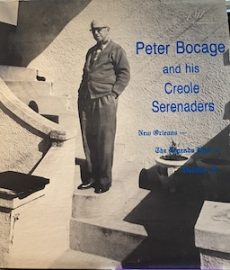
Daily Dose Of Jazz…
Peter Edwin Bocage was born on July 31, 1887 in New Orleans, Louisiana. At 21, he played violin as the leader of a ragtime band, the Superior Orchestra, which included Bunk Johnson.
He played trumpet in the Tuxedo Orchestra, the Onward Brass Band, and as the leader of the Excelsior Brass Band. He played with King Oliver’s band, the Fate Marable Orchestra, and A. J. Piron.
Heading to New York City he performed with Sidney Bechet and at the Cotton Club. He made records with Piron’s New Orleans Orchestra in 1923, and later with his band the Creole Serenaders.
As an educator he taught Louis Armstrong how to read music notes. Both jazz musicians met during jam sessions and created a friendship through music. In later years he performed at Preservation Hall in New Orleans.
Trumpeter and violinist Peter Bocage died in his hometown on December 3, 1967.
More Posts: bandleader,history,instrumental,jazz,music,trumpet,violin
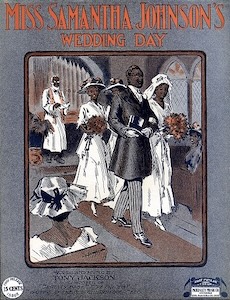
Daily Dose Of Jazz…
Tony Jackson was born Antonio Junius Jackson an epileptic on October 25, 1882 into a poor Black family of freed slaves in Uptown New Orleans, Louisiana. His twin brother died at fourteen months of age. Showing musical talents at a young age by 10 he constructed a crude properly tuned harpsichord out of junk in his backyard. He played hymns he heard in church and soon the neighborhood was offering the use of their pianos and reed organs to practice on. This led to his first musical job at age 13, when he began playing piano during off hours at a Tonk run by bandleader Adam Olivier.
Jackson became the most popular and sought after entertainer in the red light district Storyville. Able to remember and play any tune he had heard once and was hardly ever stumped by obscure requests. His singing voice was also exceptional, and he was able to sing operatic parts from baritone to soprano range. He became a mentor to Jelly Roll Morton.
Tony wrote many original tunes, a number of which he sold rights to for a few dollars or were simply stolen from him; some of the old time New Orleans musicians said that some well known Tin Pan Alley pop tunes of the era were actually written by Jackson.
Well dressed always with a pearl gray derby, checkered vest, ascot tie with a diamond stickpin, with sleeve garters on his arms to hold up his cuffs as he played. This became a standard outfit for ragtime and barrelhouse pianists.
Moving to Chicago, Illinois hoping to have more of an influence on his career. Jackson was a resident performer at the De Luxe and Pekin Cafes in the city. In his later years his voice and dexterity were impaired by disease, syphilis or cirrhosis of the liver in addition to chronic epilepsy. Pianist, singer, and composer Tony Jackson died on April 20, 1921.
More Posts: bandleader,composer,history,instrumental,jazz,music,piano,vocal
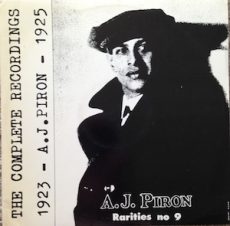
Daily Dose Of Jazz…
Armand John “A.J.” Piron was born on August 16, 1888 in New Orleans, Louisiana to Octave Louis Piron and Marie Jeanne Zeringue. At home he spoke English and French patois, and grew up steps from Claiborne Avenue, which at that time was a bustling, tree-lined center of commerce and community life. His father, a shoemaker, was also a musician and music teacher and played in the Philharmonic Orchestra. He taught his sons Milford, Albert, and Armand how to play.
At the age of seven Piron had an accident that damaged one of his legs. For the next five years while he recovered, he devoted himself to practicing the violin. This could be the reason he didn’t join the numerous New Orleans marching bands popular at that time. Instead became a dance and concert band musician and at age twelve he made his musical debut by joining a band his father led that included some of his students and his brothers.
In 1903 A.J. began playing in the Bloom Philharmonic. In 1908 he played for the Peerless Orchestra. Then in 1913 he played in the large, legendary orchestra organized by John P. Robichaux for the Carnival ball of the Elves of Oberon. That same year he played at the Rose Bud Theater on Dryades Street, sometimes with Papa Celestin’s Tuxedo band. He also played in the Olympia Band with Sydney Bechet, Kid Ory, Louis Keppard, and Clarence Williams, among others.
After touring briefly with W.C. Handy in 1917, Piron started an orchestra which included Lorenzo Tio, Steve Lewis, John Lindsay, and Peter Bocage. The theme song of the orchestra was The Purple Rose of Cairo, written by Piron and Steve Lewis. In 1923, Piron took his band to New York City.
Violinist A.J. Piron, who led dance bands during the 1910s through the 1930s, died on February 17, 1943 in New Orleans.
More Posts: bandleader,history,instrumental,jazz,music,violin
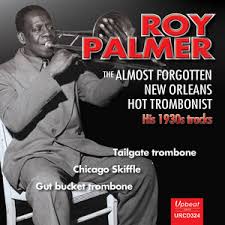
Daily Dose Of Jazz…
Roy Palmer was born on April 2, 1887 in New Orleans, Louisiana. He began his career in 1906 in New Orleans as a guitarist with the Rozelle Orchestra. He played trumpet and then trombone with Richard M. Jones, Freddie Keppard, Willie Hightower, Tuxedo Brass Band, and Onward Brass Band.
In 1917 he left New Orleans and moved to Chicago, Illinois where he worked with King Oliver, Lawrence Duhe, and Doc Cook. Palmer recorded with Johnny Dodds, Jelly Roll Morton, Ida Cox, the Alabama Rascals, and the State Street Ramblers.
In the 1930s, he was a factory worker and music teacher. Trombonist Roy Palmer died on December 22, 1963 in Chicago.
More Posts: educator,history,instrumental,jazz,music,trombone
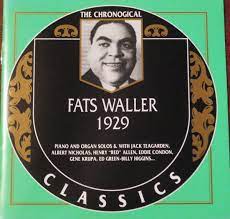
Daily Dose Of Jazz…
Henry “Bass” Edwards was born on February 22, 1889 in Atlanta. Georgia and by 14 he began playing in local Odd Fellows’ Band, and subsequently studied music at Morris Brown College and Morehouse College.
During the first World War he played in the U.S. Army Bands, including a spell with Lt. J. Tim Brymn’s 350th FA. Band. From 1919 to 1920 he played in Philadelphia, Pennsylvania with various concert orchestras, including working with Sam Wooding.
1921 saw him playing for the next four years with several dance bands in the Philadelphia-Atlantic City, New Jersey area. In mid-1925, Bass joined Duke Ellington, but only remained with the band until spring 1926. He then joined Leon Abbey in New York City and toured South America during the spring 1927. Returning to the city, he joined the Allie Ross Orchestra, which played for the Blackbirds shows.
In 1929, he joined Noble Sissle’s band on brass bass, and sailed to Europe with him. On his return Edwards worked with Fats Waller, James P. Johnson, and Eubie Blake, before rejoining Allie Ross for the Rhapsody in Black show. His last major jazz position was with the Charlie Matson Orchestra during 1933. He then worked mainly on string bass with various light and classical orchestras.
Tubist and bassist Bass Edwards died in New York, New York on August 22, 1965.




